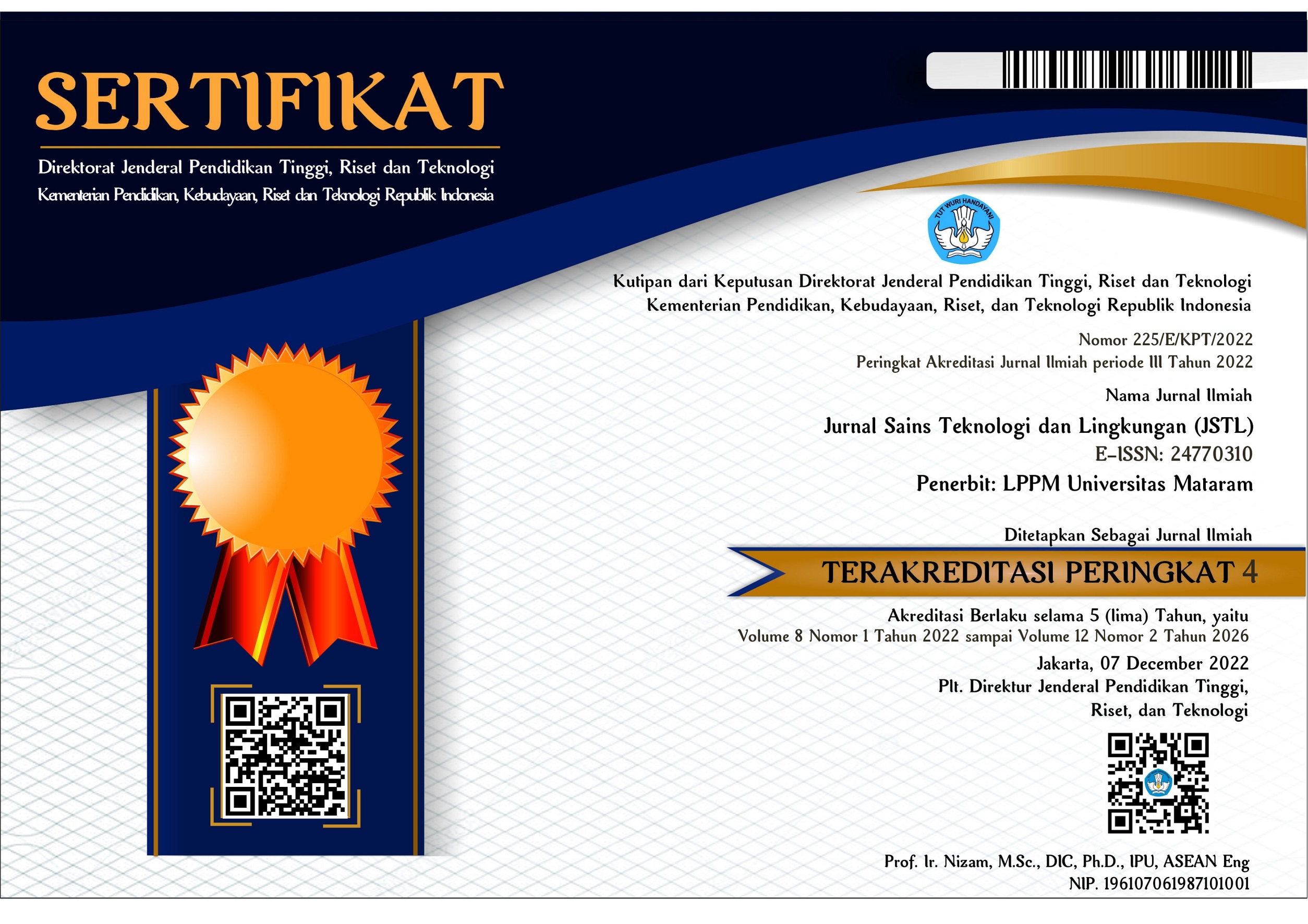Pengaruh Desain Kotak Terhadap Produktivitas Lebah Trigona sp
DOI:
https://doi.org/10.29303/jstl.v6i2.206Keywords:
horizontal, vertical, medium, egg cell, pollen, honeyAbstract
One of the factors that effect the productivity of honey bees is the factor of temperature and humidity of the nest or stup where the bees live. A nest or stup with a maintened temperature and humidity will provide the bee comfort for live. This study discusses the effect of stup size design on the productivity honey bee of Trigona sp. This study used a Complete Random Design (CRD) with 3 stup design, namely: Horizontal, Vertical and Medium. Each design size consists of 4 replications, and each replication consists of 2 stup. Data were analyzed using by analysis of variance (ANOVA) and Duncan's test at 95% confidence level. The parameters observed were number of egg cells and pollen, weight pollen, number of honey pots and volume of honey. The results of the analysis showed that production of the medium design for number of egg cells, pollen, weight pollen, number of honey pots and the volume of honey of Trigona sp was significantly higher than vertical and horizontal design. The conclusion of this study showed that the medium stup is better used in farming system of Trigona sp.References
Bankova V., 2005. Recent Strends and Important Developments in Propolis Research. eCAM 2(1): 29-32.
Banowu A., 2016. Studi Perkembangan Koloni dan Produksi Lebah Trigona sp dari Posisi Kotak Yang Berbeda. Skripsi. Program Studi Manajemen Hutan, Jurusan Kehutanan, Universitas Halu Oleo.
Gojmerac, W. L. 1983. Bee, Bee keeping, Honey and Pollination. Avi, Westport
Hilario, S. D., M. Girimenes, & V. L. Imperatriz-Fonseca. 2003. The Influence of colony size in diel rhythms of flight activity of Melipona bicolor lepeletier (Hymenoptera, Apidae, Meliponini). In G.A R. Melo & Alves-dos-Santos Apoidea Neotropica: Homenagem Aos de Jesus Santiago Moure. Editora UNESC, Criciúma.p:191–197
Melissa. 2008. Studi Pengembangan Hasil Hutan Bukan Kayu. Rajawali Press. Jakarta.
Morse, R. A. & Hooper T. 1985. The Illustrated Encyclopedia of Beekeeping. Blandford Press, England.
Murtidjo, B.A. 1991. Memelihara Lebah Madu. Penerbit Kanisius, Yogyakarta.
Nugroho, M. 1993. Inventarisasi dan pemanfaatan tanaman pakan lebah di kawasan gunung Arca Sukabumi. Skripsi. Fakultas Peternakan, Institut Pertanian Bogor, Bogor.
Riendriasari, S.D. 2013. Budidaya Lebah Madu Trigona sp. Mudah dan Murah. Makalah Seminar Alih Teknologi “Budidaya Lebah Madu Trigona sp”. Balai Teknologi Hasil Hutan Bukan Kayu. Mataram
Sihombing, D. T. H. 2005. Ilmu Ternak Lebah Madu. Gajah Mada University Press, Yogyakarta.
Sumoprastowo, R. M. & R. A. Suprapto. 1980. Berternak Lebah Madu Modern. PT. Bhantara Niaga Media, Jakarta.
Wikipedia, 2016. Desa Tengah Kecamatan Utan Kabupaten Sumbawa. Wikipedia.org/wiki/Tengah_Utan_Sumbawa.
Yanti. I.G.P.D., 2006. Pengaruh Ukuran Kotak Terhadap Produk Lebah Trigona sp. Di Kecamatan Landono Kabupaten Konawe Selatan. Skripsi. Jurusan Kehutanan, Fakultas Kehutanan. UHO.
Yoppy, G. 2013. Aktivitas dan produktifitas lebah Trigona Laeviceps dii kebun polikultur dan monokultur pala (Myristica fragrans). Skripsi, Departemen Ilmu Produksi dan Teknologi Peternakan, Fakultas Peternakan, Universitas Pertanian Bogor.



1.png)











